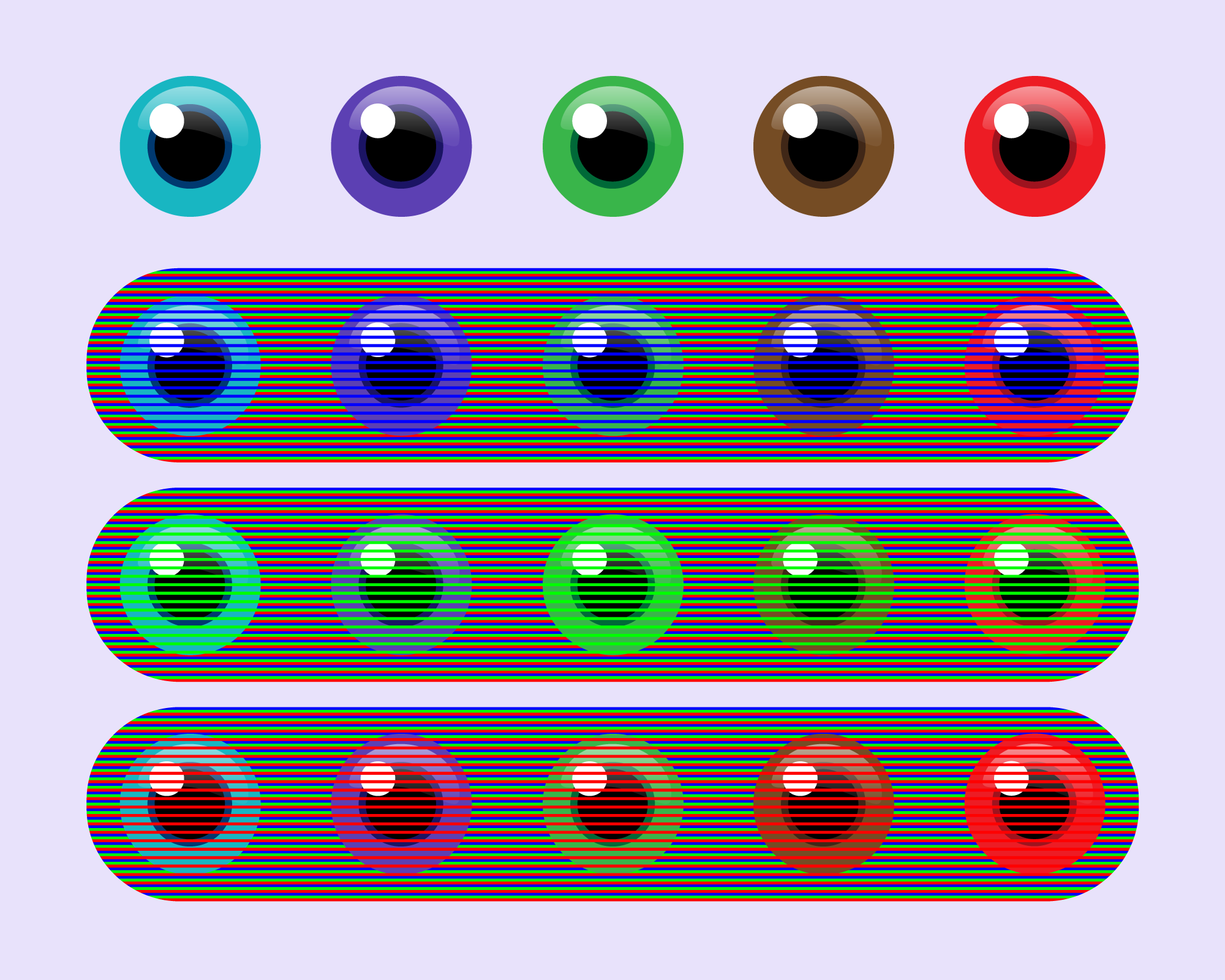
There are many optical illusions out there, which use colours, patterns and lighting to deceive our brains.
Previously, we have shown an illusion that uses colour saturation to make it look like an object is changing colours as it moves through different backgrounds.
The Munker-White’s optical illusion uses a similar concept, as our brains are also tricked into seeing different colours. However, it applies to static images and uses different overlays instead of backgrounds to achieve this effect.
Take a look at the three eyes in the images shown below. Which colours do you see?

The answer may surprise you, as all three eyes are actually the same colour: purple.
Still not convinced? Here is the same set of pictures again, this time including the original image.

How does it work?
This skewed perception of colour is caused by a phenomenon known as the Munker-White’s illusion, which is based on the Bezold effect, named after German professor of meteorology Wilhelm von Bezold (1837-1907). Bezold discovered that a colour may appear differently depending on its relation to adjacent colours.
Professor David Novick from The University of Texas at El Paso, who investigates these types of illusions thoroughly on his website, explains that the illusion is a “function of the foreground framing color, which tends to tint the central circle”.
If you look closely at the image, you can see that the three rows have different colour lines running across them, which have the effect of tinting the circle around them.
The blue, green and red stripes all tint the area around them in different ways, resulting in apparent colour changes. The illusion relies on changing the stripes in the foreground and still works, even if you change the background colour.
How to reveal the illusion
How many colours are in the optical illusion?
The answer may surprise you: There are only 5. In fact, all rows of eyes are identical copies. As described above the changing colour lines make each row of eyes look a different colour.

While zooming in weakens the illusion, zooming out makes the effect even stronger. For example, in the below image on the left, it is easier to see the brown eye underneath the green stripes when the image is magnified. Looking at the image from farther away reduces the effect and the tinting of the area around it, as the lines become less apparent in the overall image.

Scientists are still not quite sure what exactly is happening in the brain to cause this illusion and have different theories. Some think it sets in during the early stages of visual processing, when the light first hits the retina, while others think the effects happen later in the brain as it processes the data.
Some people on Twitter reported that the illusion no longer worked for them once they found out how they work, while others said they could still see the colour changes when they look at the overall image.
How does the illusion work for you? Can you still see different colours or has the effect of the illusion dwindled after reading our explanation?
Whether your brain is still tricked or not, ourcontact lensescan provide you with the sharp vision you need to uncover many other colourful optical illusions.